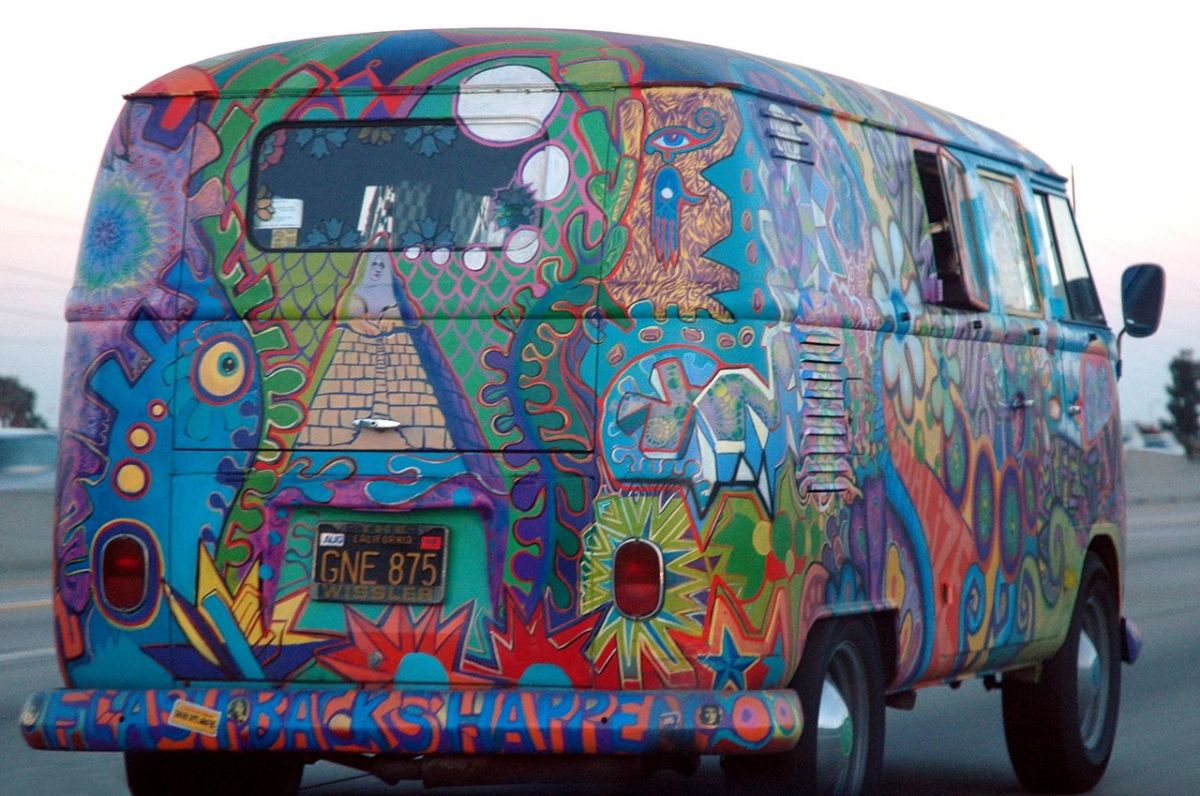Some vehicles have the cultural cachet they were designed for. Some take more unexpected paths. The latter of those is very much the case with the Volkswagen Microbus, neatly-designed and deeply functional — as well as an unlikely symbol of counterculture in the 1960s and beyond. All of which might beg the question: how, exactly, did this car line up with this point in time?
At Smithsonian Magazine, David Kindy explored the unlikely history of this vehicle. He begins with an iconic moment long after the 1960s: namely, the 1995 death of Jerry Garcia. Volkswagen paid tribute to Garcia via the illustration of a weeping Microbus — a strange yet fitting juxtaposition of images.
It’s been 70 years since the first Microbus was produced. Kindy’s article quotes Smithsonian curator Roger White, who notes that the Microbus offered an appealing contrast to other cars that were available on the American market. “For many people, the VW Microbus became the symbol of protest with Detroit’s overpowered cars and society in general,” he said.
That quality led the Microbus to be associated with all things countercultural; writing at The Truth About Cars in 2015, Ronnie Schreiber reminisced about being made aware of a Grateful Dead concert years before by the abundance of Microbuses visible on the roads.
As Kindy writes, the Microbus wasn’t just a favorite for concertgoers; it also played a significant role in 1960s politics:
The VW Microbus was also a favorite of marginalized members of society, who could use the versatile vehicle to transport people to rallies, polling stations, protests and more during the political and cultural upheaval that laced the 1960s.
The designers of the Microbus planned for it to be a versatile and easily-customizable vehicle. Its reception in the United States proved this out — even if it wasn’t necessarily what those designers might have had in mind.
Subscribe here for our free daily newsletter.
Thanks for reading InsideHook. Sign up for our daily newsletter and be in the know.


















